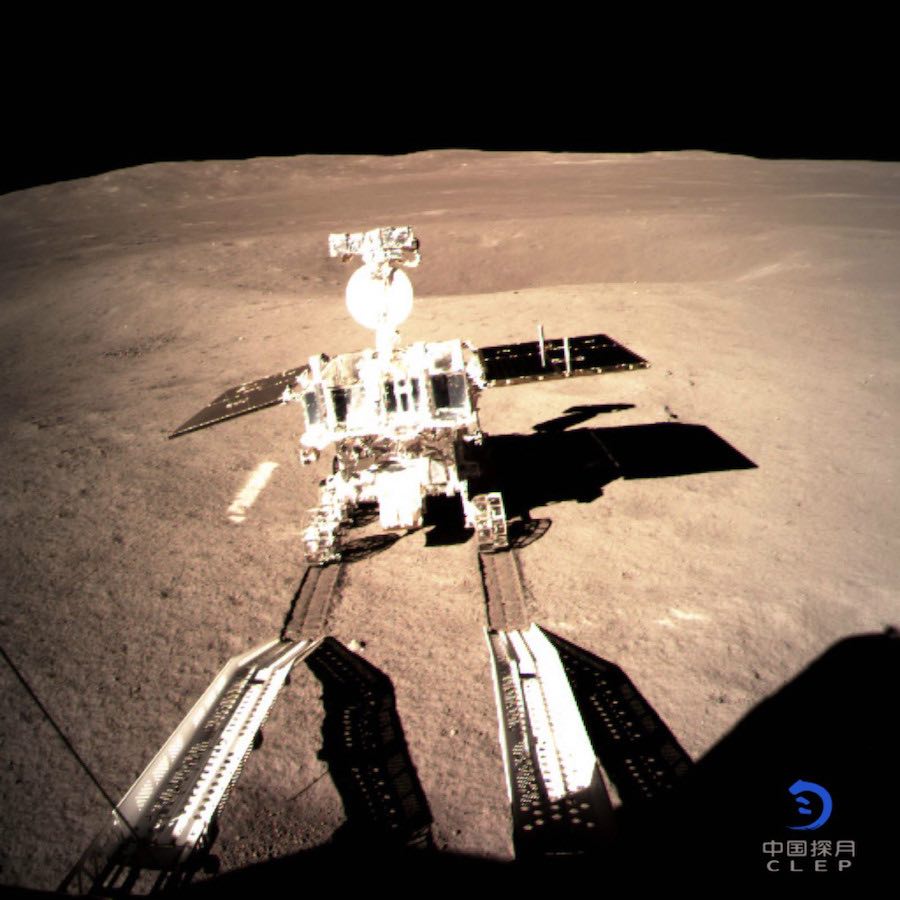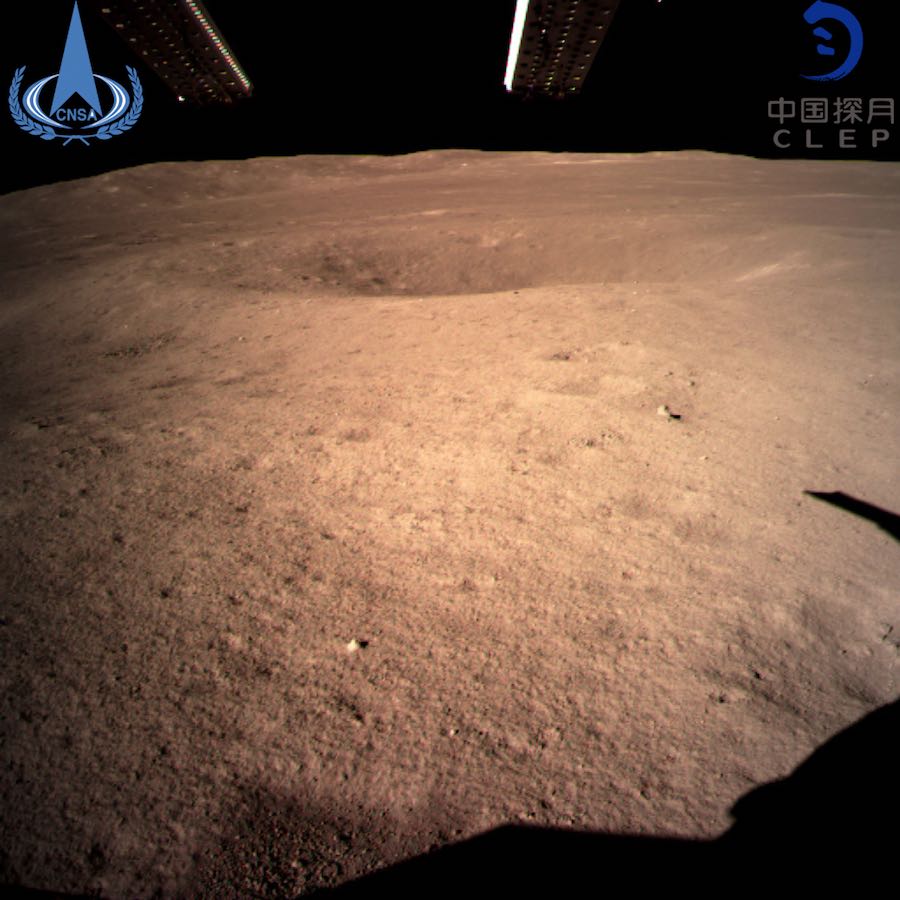 |
|
China’s Yutu 2 rover lands
on the far side of the moon and drives off the Chang’e 4 landing platform on Jan 3, 2019. Credit: CNSA/CASC/CLEP |
RocketSTEM –6 January 2019
JOHNS HOPKINS UNIVERISTY
APPLIED PHYSICS LABORATORY, LAUREL, MD –
China because the first nation in history to land a robotic spacecraft
on the far side of Earth’s Moon, when
their robotic spacecraft named Chang’e
4 fired
thrusters and braked out of lunar orbit and accomplished a soft touchdown Thursday, Jan.
3.
The
safe lunar landing by China’s Chang’e 4 probe took place at 10:26 a.m. Beijing
time, 0226 GMT on Jan. 3, 9:26 p.m. EST on Jan. 2 inside the 110-mile-wide
(180-kilometer-wide) Von Karman crater situated in the southern hemisphere of
the Moon’s far side, said the Chinese National Space Administration (CNSA).
China thus accomplished a truly amazing and history
making feat of space exploration ! And they did it before any of the worlds other
space super powers – namely the US, Russia, Europe and Japan.
China beat the US and the other space agencies to
the lunar far side because China decided to invest time, money and resources whereas
the US did not- thanks to lack of political support for NASA. Thus- don’t be surprised if China lands astronauts
on the Moon before the US.
In fact two spacecraft landed as China’s Chang’e
4 touched down.
Piggybacked on the lander deck was the small
robotic rover named Yutu-2 whose design and name stems from China’s first lunar
rover named simply Yutu – which translates as Jade Rabbit.
Hours later, Yutu-2 was unlatched from the deck
of the Chang’e 4 lander and deployed.
six-wheel robot drove down a pair of parallel ramps to reach
the lunar surface and to begin driving around and exploring the harsh but
beautiful alien terrain of our nearest neighbor.
Sadly, Chinese media did not cover the landing
and rover deployment live in real time.
Instead Chinese state media reported the events
in piecemeal fashion and at first there was some considerable confusion as to
whether the historic lunar landing had actually occurred in the first place and
occurred successfully.
Eventually Chinese media did release a statement from CNSA confirming the success as well asrelease images of
the landing and rover deployment to the lunar surface down the ramps.
“The probe, comprising a lander and a rover,
landed at the preselected landing area at 177.6 degrees east longitude and 45.5
degrees south latitude on the far side of the moon at 10:26 a.m. Beijing Time
(0226 GMT), the China National Space Administration announced,” via Chinese state
news agency Xinhua.
The first images of Chang’e 4 from the moons
surface were taken at 0340 GMT on Jan. 3, 10:40 p.m. EST on Jan. 2. They show a
large crater in front of the lander. Yutu-2 then drove down the ramp towards
the crater.
“The Yutu-2
rover touched the lunar
surface at 10:22 p.m. [Beijing time] on Thursday [Jan 3], leaving a trace on
the loose lunar soil. The process was recorded by the camera on the lander and
the images were sent back to the Earth via the relay satellite
“Queqiao”,” the China National Space Administration (CNSA) announced.
The 2,600-pound (1,200-kilogram) Chang’e 4 lander was launched on
Dec. 8, 2018 on a Long March 3B rocket from the Xichang Satellite Launch Center in southwest China.
Yutu 2 is a near copy of the original Yutu lander and built
as a back up spare. It weighs 297 pounds (135
kilograms).
Yutu landed 4 years ago on the Moon’s near side in Dec.
2013 as part of the ChangE-3 mission- which made China only the third nation in
history to land a probe on the Moon – after the US and the USSR.
In the intervening years, Chang’e 3 and Yutu-2 have been enhanced with
modifications and additional science instruments from Germany and European scientists.
After the successful landing and mission of Yutu, the new
Yutu-2 was given an even bolder task- landing on the lunar far side !!
In May 2018 China launched a separate communications relay
craft named Queqiao to permit communications between
Earth the Chang’e 4 spacecraft when it is outside of direct radio
contact. Queqiao translates as “magpie bridge.”
Queqiao is operating in the halo orbit around the second Lagrangian (L2)
point of the Earth-Moon system.
Yutu 2 is equipped with four scientific payloads, including
a panoramic camera, infrared imaging spectrometer and radar measurement
devices, to obtain images of the moon’s surface and detect lunar soil and
structure, according to Xinhua.
The historic Chinese lunar landing took place while I was
covering NASA’s historic flyby of ‘Ultima Thule’ by the New Horizons probe – 4
Billion miles distant from the Earth and the Moon in the far flung reaches of
the Kuiper Belt.
Watch
for Ken’s continuing onsite coverage of NASA, SpaceX, ULA, Boeing, Lockheed Martin,
Northrop Grumman and more space and mission reports direct from the Kennedy Space
Center, Cape Canaveral Air Force Station, Florida and Wallops Flight Facility,
Virginia.
Stay tuned here for Ken’s continuing Earth and Planetary science
and human spaceflight news: www.kenkremer.com –www.spaceupclose.com – twitter
@ken_kremer – email: ken at kenkremer.com
Dr. Kremer is a research scientist,
journalist and photographer based in the KSC area.
Ken’s photos are for sale and he is available for lectures and outreach events




